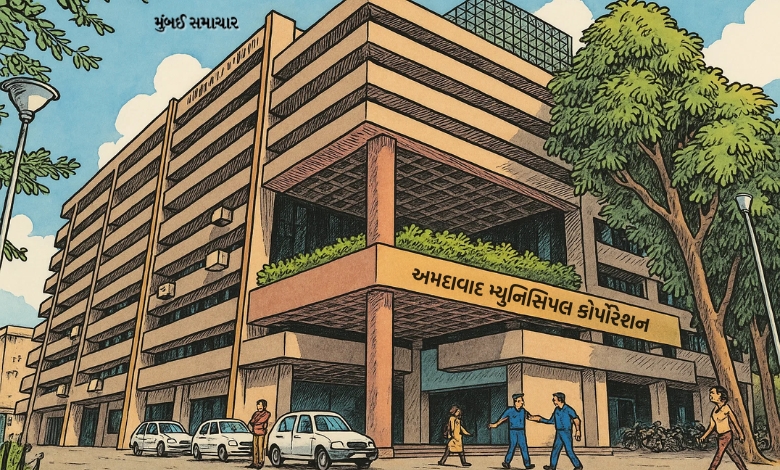Ahmedabad Unveils ‘Urban Greening Policy’ After Removing 12,000 Trees in Seven Years

Ahmedabad: The Ahmedabad Municipal Corporation (AMC) has approved a new “Urban Greening Policy” in an effort to make the city greener, a move that comes after the civic body itself oversaw the removal of 12,000 mature trees for various development projects over the last seven years.
The proposal was formally approved in a recent Standing Committee meeting. This new policy follows a period where, despite spending over ₹100 crore in the last two years to plant 7 million saplings, residents have reportedly seen no discernible improvement in air quality or reduction in urban heat.
A History of Deforestation for Development
Since 2011, the AMC has annually allocated crores of rupees toward increasing the city’s green cover, launching initiatives with names like “Oxygen Park” and “Biodiversity Park.” However, records show a starkly different reality. Over the past seven years, the corporation has felled more than 12,000 well-established trees to clear the way for major infrastructure projects, including the Metro Rail, new flyovers, and designated “iconic roads.”
Compounding the issue, an additional 3,000 trees have been illegally cut down across the city in the last five years without the required municipal permissions.
The newly introduced Urban Greening Policy aims to reverse this trend. The plan includes the creation of Rain Gardens, Rooftop Gardens, Lake Gardens, Urban Forests, and Ecological Parks. Under the new rules, all new Town Planning (TP) schemes will be required to designate at least 5% of their total area for green cover, with 1% of that specifically allocated for dense urban forests using the Miyawaki method.
An Urban Greening Advisory Committee is also set to be established. This body will include urban planners, environmental experts, and representatives from the builder’s association, the Chamber of Commerce, and various NGOs. The committee will meet monthly to guide the city’s greening initiatives.
However, questions about implementation and effectiveness remain. Officials have been unable to provide data on the survival rate of the millions of saplings planted over the past few years. This year alone, of a target to plant 4 million saplings, only 1 million have been planted so far.




